Western Georgia – The ancient kingdom of Colchis, land of the Golden Fleece and princess Medea, centered on modern Poti, was originally a Greek colony and known for its famous School of Rhetoric and Philosophy. Kutaisi – biggest city of West Georgia. Kutaisi was the capital of the ancient Kingdom of Colchis as early as the second millennium BC. Many other settlements were subsequently founded up and down on the Black Sea coast by this famed civilization , today the location of the magnificent UNESCO monuments.
Day 1. Arrival
Arrival at the Tbilisi International Airport. Transfer to the hotel.
Walk along Rustaveli Avenue. In order to learn more about Tbilisi and be able to touch its traditions, you need to take a walk along Shota Rustaveli Avenue. The length of the avenue is only one and a half kilometers, so a walk along it will not be tiring. A variety of stories – from comical to tragic – are associated with almost every house on Rustaveli.
The avenue is a combination of old and modern buildings, art galleries, exhibition halls, theatres, malls, cafes, restaurants and gift shops. Shady plane trees, monuments to prominent Georgians, front facades with stucco, bronze men, streets running up – all this is the central Rustaveli Avenue. In the evening, the original lighting turns on and the avenue becomes even more beautiful.
Overnight in Tbilisi
Day 2. Tbilisi - Gori - Borjomi - Kutaisi
Departure from western Georgia. On the way to western Georgia, visiting the rock city of Uplistsikhe. The uniqueness of the monument lies in the fact that, thanks to its structure, it has preserved the remains of architectural and religious buildings built over several millennia. The city arose at the end of the II – at the beginning of the I millennium BC. E., survived several ups and downs, was finally abandoned in the 19th century and is, therefore, a multi-layered archaeological object, one of the most important monuments of Georgian culture. During its heyday, Uplistsikhe included more than 700 caves and cave structures, of which only 150 have survived to this day.
Visit to the house-museum of Joseph Stalin in Gori. The exposition contains many things that actually or supposedly belong to Stalin, including some of the furniture from his offices, and gifts. The display ends with one of the twelve copies of Stalin’s death mask. In front of the main museum is the house where Stalin was born and spent the first four years of his life. The museum presents Stalin’s personal railway car. The car has been used by him since 1941, including for trips to the Tehran and Yalta conferences.
Departure for Borjomi. Modern Borjomi is one of the popular resorts in Georgia, which is suitable for ecotourism and family holidays. Its convenient location in the beautiful mountains of the Lesser Caucasus attracts many tourists all year round with its landscapes, the opportunity to relax and improve your health. There are dozens of mineral springs in Borjomi. The main mineral spring is located in the Central Park of Borjomi.
Visit to the city park Borjomi. Borjomi Central Park is a well-groomed place with a lot of vegetation, clean air, which is considered healing here, and a pleasant atmosphere where residents and guests of the city like to relax. Central Park gained its fame thanks to the city’s main hot spring of mineral water, which anyone can try for free. The source is located in the park in a beautiful blue pavilion with a dome with a glass roof. The main alley of the Central Park stretches along the Borjomula River passing here, over which bridges are installed, the length of the park itself is about a kilometer.
Visit to the pools of natural mineral water. The sulfur pools of Borjomi are located three kilometers from the entrance to the city park. The hot tubs themselves are three pools. All the water that enters the tanks comes from large taps, it is cloudy and has a somewhat specific smell, nevertheless, water procedures in the hot spring give vigor, and as a bonus, a walk in the pine forest. Next to the sulfur baths there are benches, showers and a cafe.
Overnight in Kutaisi
Day 3. Kutaisi – Ambrolauri –Kutaisi
Kutaisi was founded about 40 centuries ago, the former capital of the Georgian kingdom – Colchis, with which the myth of the Argonauts is associated. Like many Georgian cities, Kutaisi is not only beautiful, but also interesting in architectural, historical and cultural terms. Tangled streets, crooked alleys, one-two-story houses with hanging verandas immersed in greenery, located one above the other, as if climbing the steep slopes of mountains on the right bank of the Rioni, have preserved traces of medieval architecture.
Visiting the Gelati Monastery. Complex founded by King David Agmashenebeli (Builder) in 1106 on a hill above the valley of the Tskal-Tsitela River, not far from Kutaisi. The territory of the monastery is surrounded by a fortress wall and consists of 5 buildings: the main Cathedral of the Assumption of the Virgin (built in 1106), from the east of the main cathedral is the Church of St. George (XII century), the two-tiered Church of St. Nicholas (XII-XIV centuries .), Academy building, refectory, bell tower. The Gelati Monastery has preserved a great number of wall paintings dating back to the 12th-18th centuries. The Gelati monastery complex is included in the UNESCO World Heritage List.
Visiting the Motsameta Church (“Holy Martyrs”), located in an amazing area on a high rock ledge. Motsameta means “martyrs” in Georgian. · In the only Church of the ensemble there is a sarcophagus with the incorruptible relics of the martyrs of the 8th century – Princes David and Constantine. The first mention of the monastery was in the VIII century. The story tells about the cruel Arab ruler Marwan, who destroyed everything in his path. The small church, located on the site of the monastery, was also destroyed. The present time is a small, very beautiful monastery with round turrets crowned with pointed hipped domes. The monastery stands above the stormy river Rioni and is buried in the greenery of coastal vegetation.
Departure from Ambrolauri – picturesque place in the foothills of Georgia, located in the Ratcha region. Ractha is the smallest and perhaps the most beautiful and beloved region among Georgians. They call Racha “Georgian Switzerland”, because of the transparent mountain air, because of the beautiful emerald lakes with the purest water, because of the alpine meadows and mountain peaks of the Caucasus, covered with eternal snows. When you want to escape from the heat, get closer to Georgian culture and touch the centuries-old heritage
Visit to the church of Barakoni . The temple is located on a steep cliff. At the foot of the temple, the turbulent waters of the Rioni River merge with the waters of the Lukhuni River. The temple was built in the form of a cross with right angles, without additional outbuildings. The dome rests on the corners of the altar walls and two columns. Outside, the walls of the Temple are decorated with intricately crafted carvings. In the niches of the eastern façade you can see the most ancient examples. Elements of frescoes, an ancient iconostasis and several modern icons attract attention in the interior. This building was recognized as a monument of the old Georgian domed architecture. On the hill on the other side rise the ruins of the ancient Mindatsikhe castle, where Queen Tamara spent her childhood.
Visit to the church of Nikortsminda, which the locals call the “decorated bride”. The church outside and inside is covered with incredibly beautiful carvings. Stone carving is a traditional local art. Racha patterns and ornaments are very refined and complex; none of them seem to be repeated twice. The church is decorated with wonderful frescoes of the 17th century. The paintings decorating the inner walls of the cathedral have been preserved in excellent condition. The decor of this cathedral is considered one of the best in Georgia. Here, various artistic styles are intertwined in an original way. The Nikortsminda Cathedral has been submitted for inclusion in the UNESCO World Heritage List.
Visit to the Bugeuli winery – tours around the plant and tasting of the rare Ratcha wine “Khvanchkara” are organized here. This is an elite Georgian wine that made a splash at the international exhibition. Khvanchkara is a naturally semi-sweet red wine, its uniqueness lies in the combination of the natural conditions of the mountain Ratcha, the specifics of the vegetative process and the manufacturing technology that creates a unique bouquet. The real Khvanchkara is made from the rarest grape varieties Mujuretuli and Aleksandrouli, cultivated only in the microzone of the village of Khvanchkara and yielding 10,000 bottles a year. A visit to the winery will give a unique chance to taste the authentic Khvanchkara, get acquainted with the production technology and the characteristics of grape must fermentation in local conditions.
Visiting the reservoir of Shaori. It is located in the basin of the same name with a unique microclimate at an altitude of 1135 meters above sea level. Due to the forked “tail” of the southern part, it resembles a sea monster. Lake Shaori is surrounded by picturesque coniferous forests, behind which alpine meadows begin. It opens to tourists after overcoming the Nakerala pass, over which two bridges are stretched. In clear weather, a fantastic panorama of the snow-capped peaks of the Caucasus Mountains opens from here.
Overnigt in Kutaisi
Day 4. Kutaisi – Martvili
Visit to the Bagrati Cathedral – one of the best examples of late medieval architecture, is distinguished by exquisite, harmonious proportions, graceful decor varieties and a common interior space. The Bagrati Cathedral is a cruciform building with a dome resting on four powerful pillars, and its eastern, southern and northern branches end in semicircular apses. Its western transept was used to house the choir. The vases and capitals were covered with moldings, the walls and floor were decorated with mosaics, fragments of which are still visible. In 1994, the Bagrati Cathedral was listed as a UNESCO World Heritage Site.
Visit to the Sataplia reserve. In the reserve you can see architectural monuments and unique geological objects, traces of real dinosaurs and Sataplia karst caves. Dinosaur footprints are a piece of limestone rock. Scientists have determined that the footprints date back to the Cretaceous period, which means they are about 160 million years old. The size of the caves and their topography are amazing. Getting here, the feeling does not leave that this is a real underground kingdom, where unusual living creatures live. Karst-type caves are famous for growths – stalactites and stalagmites, which are formed when water seeps through stones and rocks.
Visit to the Monastery of Martvili. The approximate date of foundation of the monastery is the 7th century. The most impressive building on the territory of the monastery is the Assumption (Martvili) Cathedral. It was built in the 10th century and at that time was the first large-scale cathedral in Georgia. To the northeast of the Assumption Cathedral is a small church – the Chikvani temple, also built in the 10th century. A stone tower is located on the western side of the cathedral. Martvili Monastery, due to its location on a hill, is visible from almost anywhere in the city. Picturesque views of the surroundings open up from the territory of the monastery.
Visit to the Salkhino Palace – the summer residence of the Megrelian princes Dadiani, built in a secluded place in the 1830s. The palace was built for Prince Levan Dadiani, who became famous for his incredible love of wine. Moreover, this is one of those few places in Samegrelo where Ojaleshi grapes are produced. The palace is located on the banks of the Tsachkhura River. The plan of the palace, with its oak pillars and beautifully decorated arch, fully justifies the name of the Salkhino Palace, which means “Feast”. The garden was designed by Italian designer Zeb Lambert. At the end of the garden there is a wine cellar built in the 18th century.
Overnight in Martvili
Day 5. Martvili - Nokalakevi - Poti - Batumi
Visiting the fortress-city Nokalakevi, the capital of Egrisi, the site of the legendary city of Aya, where, according to legend, the Argonauts sailed. A Georgian city has been located on this site since ancient times. Greek authors called it Archeopolis, but in older Georgian chronicles the city was known as Tsikhe Goji. According to historical chronicles, the city was founded by the eristavi Egrisi Kuji in the 3rd century BC. On the territory of the fortress, ceramic and bronze items, jewelry, copper and gold coins, both locally produced and imported, were found. On the territory of Nokalakevi, crypts-tombs of the pagan period were also discovered.
Visit to the Shkhepi Fortress. For the fortress, such a mountain was selected, from where the Colchis lowland is visible at a glance. Observation from here could be carried out over a vast territory, and the castle directly controlled the main highway passing at the foot of the mountain. Now the central tower, the heavily damaged eastern tower and the foundation of the western part have remained from the fortress. Inside you can find fragments of Qvevri, which suggests that the fortress had its own wine storage. It is considered a very ancient building. The fortress is multi-layered. The main layer of the castle belongs to the period of early feudalism.
Visit to the National Reserve of Kolkheti. The reserve was opened with funds from the Global Environment Facility and the World Bank. Today, the territory of the National Park is 28,940 hectares, including 500 hectares of the Colchis State Nature Reserve, established in 1947. Most of the area is swampy and is a migration route for Eurasian and African birds. It is here that you can see about 194 species of various birds. In addition, there is an amazing flora and fauna, rich in rare species. For instance. endangered species of otters, newts, nutrias live in the Kolkheti National Park. The park has developed water tourism, diving, boating and horseback riding.
Overnaight in Batumi
Day 6. Batumi - Makhuntseti - Batumi
The mountainous Adjara – first of all, mountains, waterfalls and river gorges. These are small authentic Georgian villages with strict morals and centuries-old traditions. These are ancient fortresses, ancient churches and unique arched bridges. Deep rocky gorges with steep passes and full-flowing rivers Chorokhi, Adzharistskali, Choloki, Korolistskhali and others are hidden between the mountain ranges.
Departure for Makhuntseti. The first stop is in a wonderful beautiful place where the mountain rivers Chorokhi and Adjaristskali meet. Chorokhi is a mountain river flowing not only in Georgia, but also in Turkey. Moreover, with a total length of the river of 438 kilometers, only 26 kilometers fall on Georgian lands. The Adzharistskali River is a picturesque natural landmark of Adjara. Adjaristskali originates on the Arsian Range and is the right tributary of the Chorokhi River. Its length is 90 kilometers, the basin area is 1500 square kilometers. In the area of the village of the same name, a hydroelectric power station was built on the river.
Visiting the Makhuntseti Waterfall. The magnificent waterfall is the real pride of mountainous Adjara. Here you can watch how crystal clear water, falling from a great height, breaks on the rocks. The height of the waterfall is more than 30 meters and you need to walk to it about half a kilometer up from the highway. In summer, you can swim in a small pool where water falls from a waterfall. Splashes flying around from falling water cool the air, making it quite humid. Pure mountain water flows in a continuous stream in the spring, which flows into a full-flowing river. In summer, the waterfall plays with colored tints in the sun.
Visiting the bridge of Queen Tamara. The bridge was built in the 11th century from volcanic boulders, its length is 30 meters, and the height of the arch at the highest point is 5 meters. It got its name thanks to the then ruler Queen Tamara – it was by her will and decree that such arched bridges began to be erected. The dimensions of the Makhuntseti bridge allow it to be called the largest among its relatives, and its approximate age is 900 years. Building material was taken from the fragments of nearby rocks, and lime mortar connected them together. It seems that the construction and materials are simple, but the bridge has survived more than one earthquake and almost a thousand years.
Visit to the fortress of Gonio. The fortress of Gonio-Apsaros is a real paradise for lovers of historical and cultural values. Historical facts testify that the fortress was of great political, economic and cultural importance for the Eastern Roman Empire. In 1-3 centuries. n. e. a theater and a hippodrome functioned here. One of the 12 apostles of Christ – Matthew was buried here. In the 6th-8th centuries the fortress belonged to the Byzantine Empire. In the 13th-14th centuries it was restored by the Genoese. The name “Gonio” comes from the city of Genoa. On the territory of the fortress there is a grave, which today is considered to be the grave of the Apostle Matthew – one of the twelve apostles of Jesus Christ.
Observation deck over Gonio. The observation deck is located on the top of a mountain above the village of Gonio, offering stunning views of the Black Sea coast from the Turkish border to Batumi on one side and many mountains on the other. In the center of the observation deck there is a large cross, which is illuminated at night and is visible from afar.
Overnight in Batumi
Day 7. Batumi
Discovery the Botanical Garden of Batumi, located on the picturesque Green Cape, has no analogues in the world. The catalog of plants of the Botanical Garden contains 1800 taxonomic units of woody plants, of which 90 are of Caucasian origin and 1540 taxa are representatives of various foreign flora. The entire collection is divided into 9 different phytogeographic divisions. Visitors can get acquainted with the collections of citrus, fruit and berry and flower and herbaceous plants. Collections of camellias and roses are very popular. The Batumi Botanical Garden is especially surprising in winter: the climate of the region is subtropical, the plants feel comfortable.
Sightseeing tour of the city of Batumi. The first information about Batumi belongs to the Greek philosopher Aristotle and refers to the 4th century BC. He described a city called Batumi. At present, the city combines the charm of a southern city and a seaside resort. A visit to the main square of the city, on which stands the statue of Medea with the Golden Fleece, as a reminder that the Colchis and ancient civilizations coexisted here since ancient times.
Visiting the Seaside Park and the old city district, which is full of cafes, shops and churches. The streets of Old Batumi are decorated with ornaments of nameless mythical creatures. The city tour includes a visit to the Artists’ District (exhibitions of local artists are periodically arranged in this area), Dolphinarium, dancing fountai
Overnight in Batumi.
Day 8. Batumi - Ureki - Bakhmaro - Kutaisi
Departure for Guria – one of the amazing regions of western Georgia, which differs from others in its originality. Gurian villages are characterized by a special charm and color, especially in autumn. The cultivation of vineyards in Guria dates back to antiquity. In the courtyards of wooden houses with rows of green trees, surrounded by wooden fences, you can often see corn grains scattered like beads and gourds drying in the sun.
Visit to the resort of Ureki – unique climatic and balneological resort on the Black Sea coast in Georgia, famous for its beaches with black magnetic sand, which has no analogue in the world. The coastal strip of the beach is represented by fine-grained sand enriched with magnetite. The proximity of the warm Black Sea contributes to the formation of a humid subtropical climate in the Ureka region. The duration of sunshine is on average 1800-2000 hours. The rich gifts of nature – the sea, the sun, fine “velvety” sand with magnetic properties – make the Ureki resort a wonderful place for outdoor activities and treatment.
Nabeglavi is a village on the way to Bakhmaro, famous for its mineral waters, located on the road from Chokhatauri to Bakhmaro. The springs of the balneo-climatic resort are characterized by unique therapeutic and prophylactic properties. Regular consumption of Nabeglavi helps the body remove harmful substances and enrich itself with essential minerals. It is recommended to take this water at any age, and in unlimited quantities. It produces the famous throughout Georgia mineral water “Nabeglavi”, reminiscent of “Borjomi”. Mineral water Nabeglavi received ISO 9001:2000, as well as a certificate of conformity to EU standards. It is purchased in 20 countries of the world
Visit to the resort of Bakhmaro – the main resort value of the region. Alpine climatic resort, which is located 40 kilometers from the sea and more than 2000 meters above sea level. The confluence of sea and mountain air currents creates a unique climate. Discharged air, coniferous forests that secrete useful enzymes, clouds with droplets of sea water, “swimming” nearby, contribute to the cure of many diseases of the respiratory system. The combination of an unusual climate and a mountainous landscape is especially useful for neurosis, neurasthenia, anemia, etc.
Overnight in Kutaisi
Day 9. Kutaisi - Mtskheta – Tbilisi
Departure to Mtskheta. The oldest city-reserve, whose age is about 4000 years, is considered the Second Jerusalem, a museum of Christian culture. In a small area between small streets, it keeps a lot of saints and places of worship. Mtskheta is actually the heart of Georgian civilization, the capital of Georgia before the founding of Tbilisi.
Visit to the Jvari monastery – Georgian monastery and temple of the 7th century, one of the masterpieces of architecture for the perfection of architectural forms and the first World Heritage Site in Georgia. Jvari (lit. “cross”) is located on the top of a mountain at the confluence of the Kura and Aragvi near Mtskheta – where, according to historical sources (“Conversion of Georgia”, “Life of the Kartli kings”), St. Nino erected a cross. Jvari Monastery is included in the UNESCO World Heritage List.
Visit of Svetitskhoveli – The temple, with some changes that has survived to this day, was built at the beginning of the 11th century. It is one of the greatest cathedrals. The ancient shrine and spiritual center of Georgia was built on the site of previous churches, the walls of which were not completely destroyed and were preserved as architectural elements. Svetitskhoveli keeps the most important Orthodox relics: the chiton of the Lord, the font of King Mirian, a particle of the relics of the Apostle Andrew the First-Called, the robe of the prophet Elia, the relics of the holy Georgian kings. Svetitskhoveli Temple is included in the UNESCO World Heritage List.
Visit of Samtavro Monastery. The history of the monastery begins in the 4th century and is associated with St. Nino, one of the most revered saints in Georgia. After arriving in Mtskheta, St. Equal-to-the-Apostles Nino found a secluded place near the northern border of Mtskheta, where she settled in a hut in blackberry bushes (which has survived to this day) and continued her sermon. Samtavro is especially revered by believers, since there are Christian shrines here – The icon of the Iviron Mother of God , the relics of King Mirian and Queen Nana, the relics of St. Shio Mgvimeli and of St. Gabriel Urgebadze. Samtavro Monastery is included in the UNESCO World Heritage List.
Visiting the Shio-Mgvime Monastery – ancient monastery founded in the 6th century by the monk Shio, who spent his last years in a deep cave located on the territory of the monastery. Where did the name of the monastery come from – “Shio-Mgvime”, which in Georgian means “Cave of Shio”. The first building was the Church of St. John the Baptist. The monastery quickly became the largest monastic community; by the end of the 6th century, it had about 2,000 monks in its ranks. The monastery was repeatedly devastated and destroyed. At the end of the 19th century, Shio-Mgvime was completely renovated. Now it is active and still attracts pilgrims.
Departure for “Chateau Mukhrani“. “Mukhrani” in Georgian means “decorated with oak trees”. This is not only one of the most picturesque places in Eastern Georgia, but also a territory with healthy soil and harmonious climate. Masters of Chateau take the authenticity of the region as a basis and strive to emphasize the terroir and character of the unique Georgian grape varieties. Chateau vineyards are located in specially selected areas of the region. The fabulous palace and wine cellars, beautiful gardens and vineyards brought Chateau Mukhrani worldwide fame.
Overnight in Tbilisi
Day 10. Tbilisi
Transfer for Europe Square (Rike Square), which is located in the heart of the Old City. At present, the city is a quiet charm of the crooked, sun-drenched streets of Tbilisi, the terraces of houses twined with vines, ancient churches with tiled domes, the ruins of ancient monasteries, traditional Georgian courtyards with bizarre carved verandas – it is impossible to resist this landscape.
Visit to the Sameba Cathedral – the Temple was really built on a grandiose scale, its sparkling golden dome can be seen from almost anywhere in Tbilisi. The temple is part of a whole complex, which also includes the residence of the Patriarch and the monastery, theological seminary and academy, a hotel; as well as a complex of nine chapels, five of which are located underground.
Visit to the Metekhi Temple. On the elevated rocky bank of the Kura River stands a majestic witness to the long and exciting history of Tbilisi – the Metekhi temple. Once upon a time there was a palace of local kings, which, according to historians, was erected by the founder of the city, Vakhtang Gorgasali. There is a beautiful observation platform from which you can admire the Old Town lying opposite across the Kura.
Visiting the Narikala fortress, which is the most ancient monument, a kind of “soul and heart of the city”. The date of construction of the fortress is called approximately the 4th century AD, that is, it stands, in fact, from the foundation of the city itself. In the future, the fortress was expanded and completed several times.
Visiting the Tbilisi sulfur baths, built in the style of classical oriental architecture. These are low, squat buildings, topped with semicircular domes with large glass openings in the center, which served as windows that illuminate the interior, since the baths themselves are below ground level.
Legvtakhevi is located in the center of old Tbilisi, behind the sulfur baths. This part of old Tbilisi is distinguished by individual landscape architecture, at the same time it is characterized by a significant architectural, historical and cultural heritage. There is also the central entrance to the Tbilisi Botanical Garden. From the high observation deck, located at the entrance to the garden, you can see the Legvtakhevi gorge, into which a 20-meter waterfall falls from a ledge of a rock.
Visit to the Sioni Cathedral – historically the main temple of Tbilisi, named after Mount Zion and consecrated in honor of the Assumption of the Blessed Virgin Mary. It is located on the banks of the Kura River in Old Tbilisi. Some hierarchs of the Georgian Church are buried in the cathedral, and its main relic is the ancient cross of St. Nino, who brought Christianity to Georgia.
Visiting the Tbilisi Sea and the majestic Monument “History of Georgia“, which is simply amazing. On one of the city hills, which offers a beautiful view of the Tbilisi Sea, a unique composition of twelve sculptures of Georgian kings, a church and stairs with arches, balustrades and viewing platforms has been created.
Visiting the mount Mtatsminda. One of the mountains around Tbilisi, called the “Holy Mountain” by analogy with the Holy Mountain of Athos. The funicular is a railway, a 500-meter road allows you to get out in the middle of the mountain, where you can visit the Pantheon of writers and public figures of Georgia, as well as climb to the Mtatsminda Amusement Park itself and enjoy the majestic panoramic views of the city.
Overnigt in Tbilisi
Day 11. Departure.
walk around the city
Transfer to the airport
The price for one person $ ( US Dollars)
From 55 USD
The price depends on the number of people and varies(±) from 55 USD for one day.
Price Includes: Transport, Accommodation, Services of guide.
The cost of each excursion is discussed individually.
For more information, do not hesitate to call or write Viber/WhatsApp +995 599 25 65 19 or in mail: info@georgiavoyage.ge
*Timetables : on request
| Nomber of persons | 1-3 per | 4-8 per | 9-19 per | 20-40 per |
| Mode of transport | Sedan | Minivan | Minibus | Bus |
*The tour programs are based on our experience and the opinions of our completely different customers. These are semi-finished circuits, whose programs can be easily redone. Add or subtract the number of excursion days. Sort or redo the excursion day, change the sequence, the duration, prices …
Every day excursion is a stand-alone destination. It is the separate route with the calculation of the distance and the comfortable movement between the excursion points. Each tour and each itinerary is examined at the time of the request. Also, at the desire of the tourists, they can change the already booked and paid program.




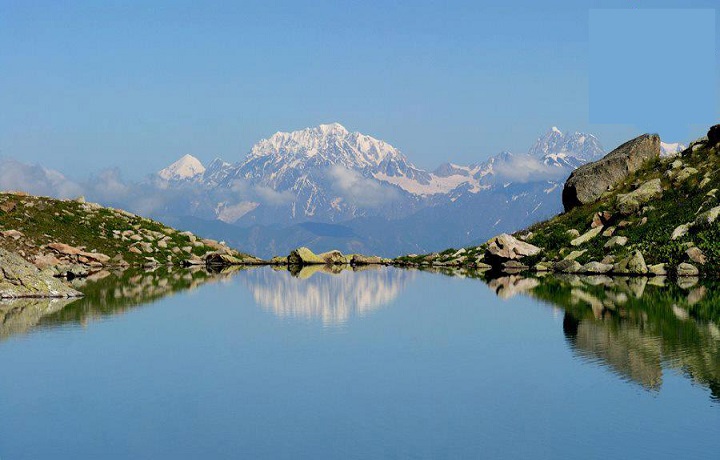



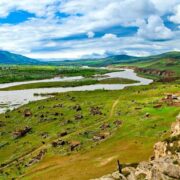
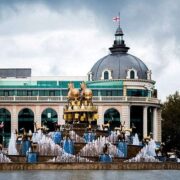
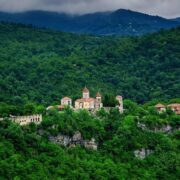


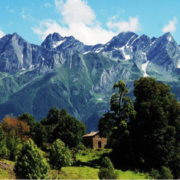


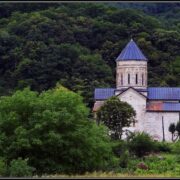



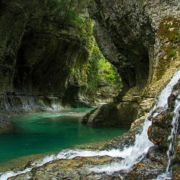
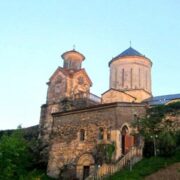

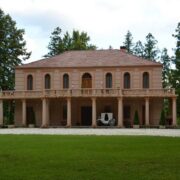
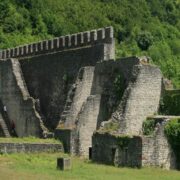



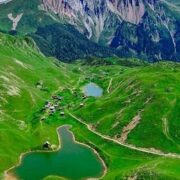
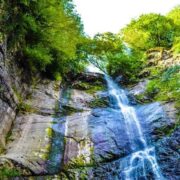
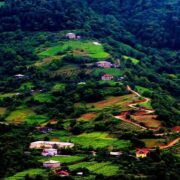




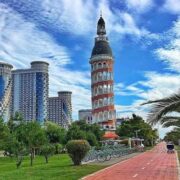
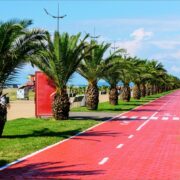

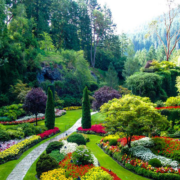
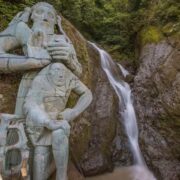
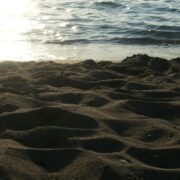


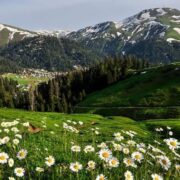
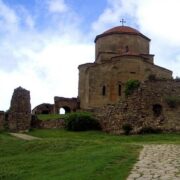


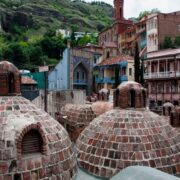

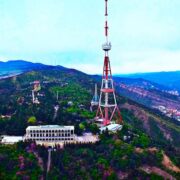
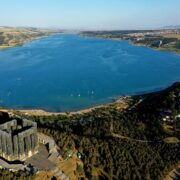

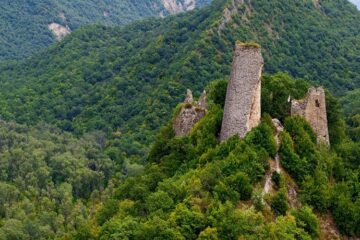
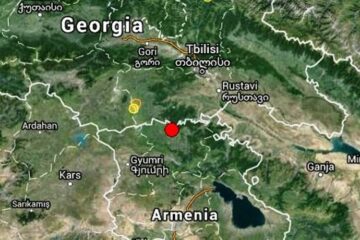
Tour Reviews
There are no reviews yet
Leave a Review